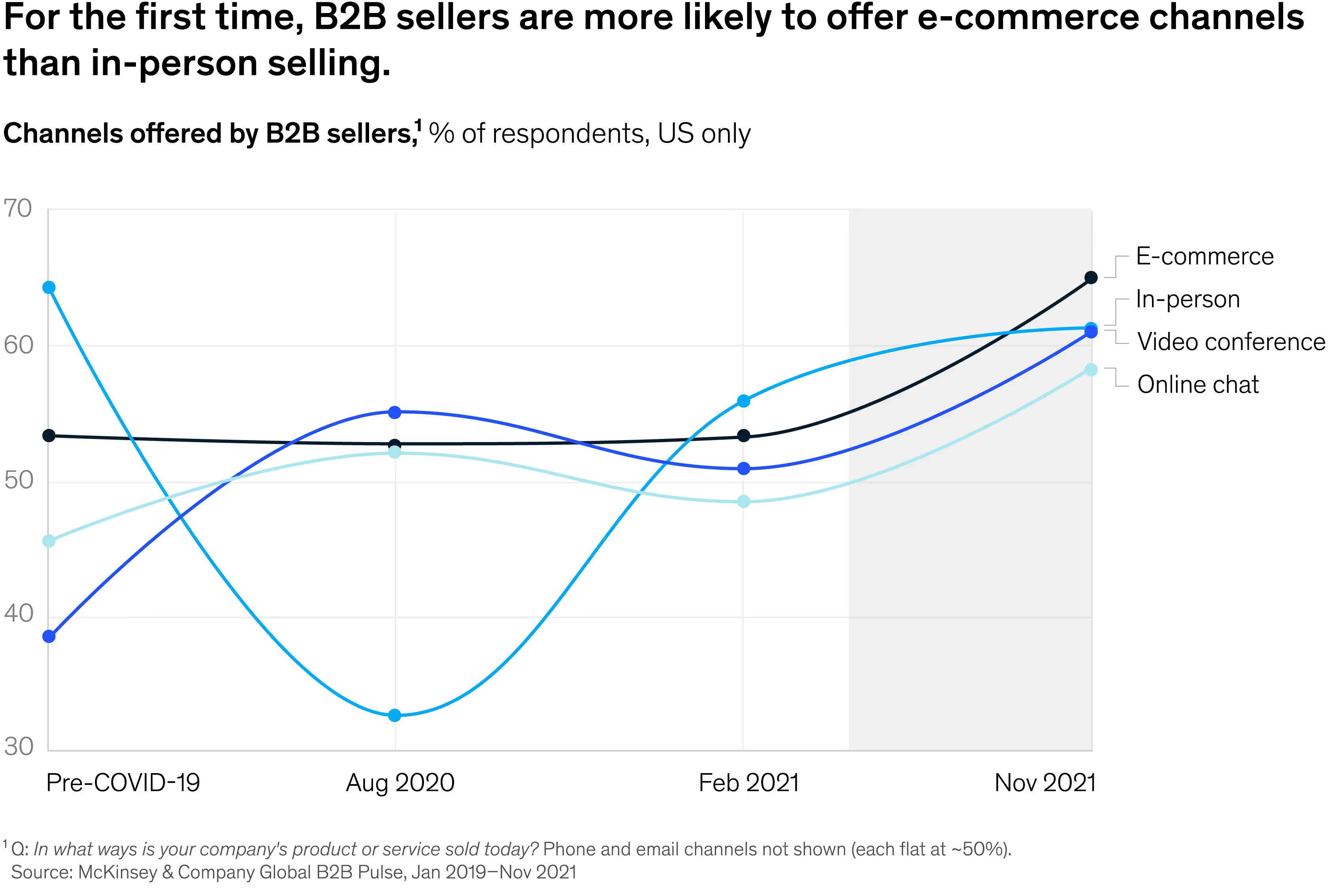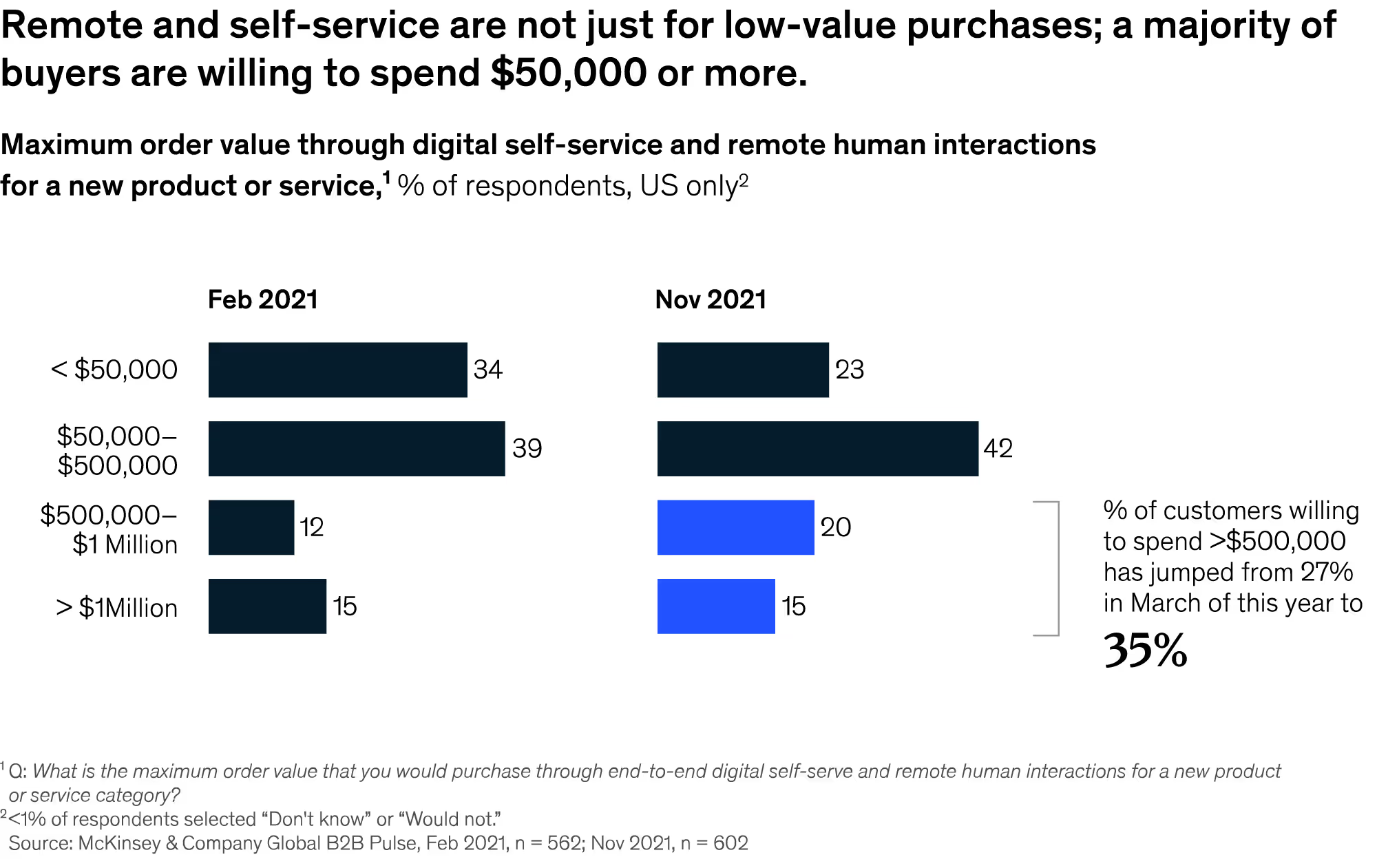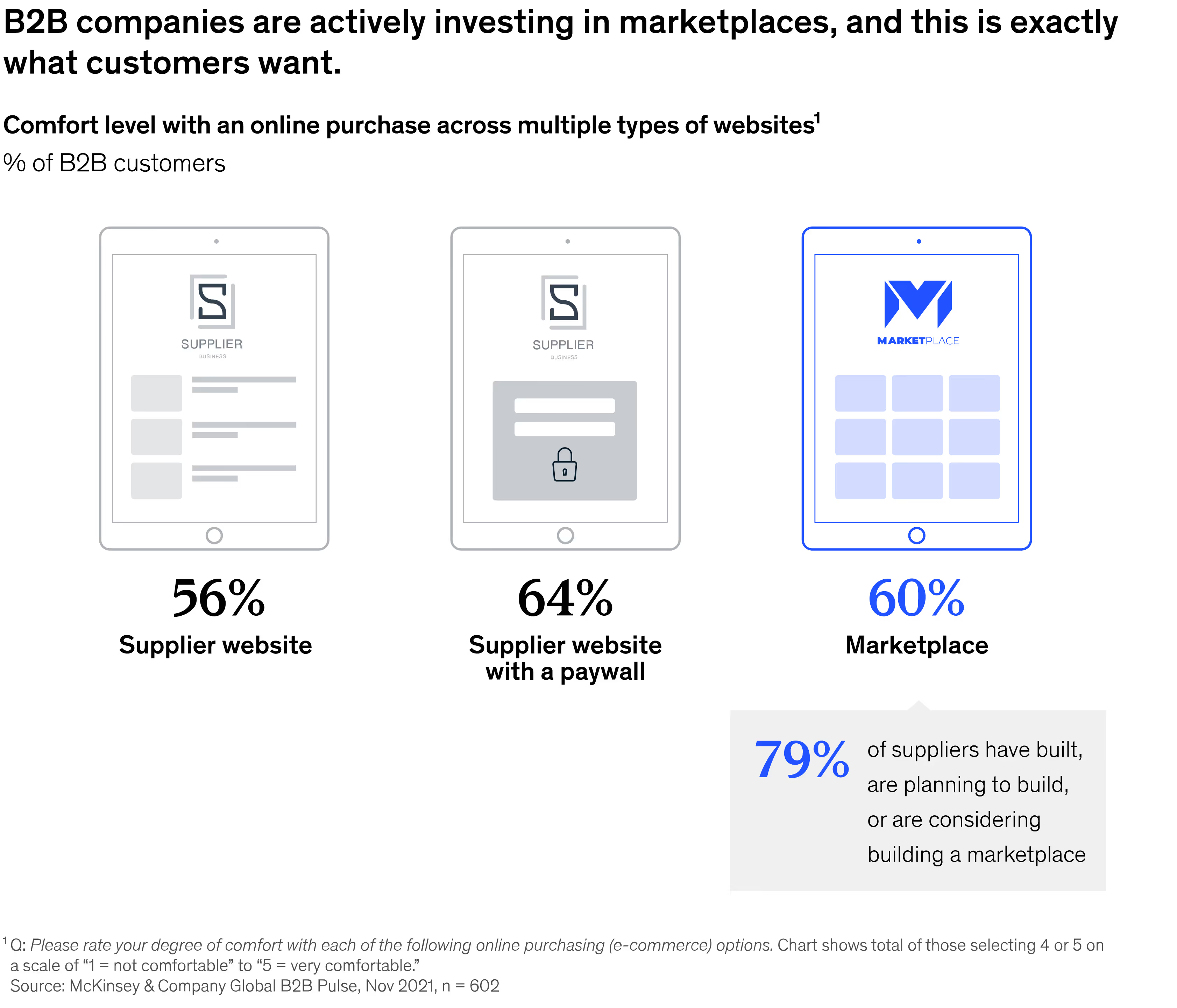What are the top five B2B e-commerce myths?
April 24, 2025
April 2025
/
Misconceptions concerning B2B e-commerce hinder success in an increasingly important area of digital transformation. This is especially true for life sciences, healthcare, and pharmaceutical organizations that often opt-out of enterprise B2B e-commerce implementations based on misguided assumptions regarding the needs, expectations, and behaviors of their customers.
What are the top five B2B e-commerce myths?
Myth #1: B2B e-commerce is just a digital version of B2C e-commerce.
While there are similarities between B2B and B2C e-commerce, such as the use of online marketplaces and digital payments, B2B e-commerce is a distinct field that requires a unique approach. B2B transactions are typically more complex and involve longer sales cycles, larger order sizes, and more negotiation than B2C transactions.

Myth #2: B2B e-commerce is only relevant for large companies.
Small and mid-sized companies can also benefit from B2B e-commerce, as it can help them reach new customers, increase efficiency, and reduce costs. In fact, B2B e-commerce may be even more important for smaller companies, as it can level the playing field and help them compete with larger companies.

Myth #3: B2B e-commerce is only useful for selling simple products.
B2B e-commerce can be used to sell a wide variety of products, from simple items like office supplies to complex products like machinery and equipment. In fact, B2B e-commerce can be particularly useful for selling complex products, as it allows buyers to access detailed product information and compare products easily.

Myth #4: B2B e-commerce is too expensive to implement.
While there may be upfront costs associated with implementing B2B e-commerce, such as developing a website or integrating new software, the long-term benefits can outweigh the costs. B2B e-commerce can help companies streamline their sales processes, reduce costs associated with paper-based transactions, and reach new customers.

Myth #5: B2B e-commerce will replace traditional sales channels.
B2B e-commerce should be seen as a complement to, rather than a replacement for, traditional sales channels such as sales reps and distributors. While some transactions may be fully digital, others may require a combination of digital and traditional channels. The key is to find the right balance that works for each company and its customers.

As B2B companies strive to meet the increasingly high demands of their customers, sales leaders must be prepared to take the necessary steps to stay ahead of the competition. To achieve success in e-commerce, it's important to set aside outdated myths and embrace the following five actions:
- Lean into B2B e-commerce: e-commerce has become a vital component of B2B revenue growth, with potentially a third of sales at stake. To remain competitive, it's crucial to offer an online sales channel. If you haven't already, now is the time to ramp up that capability.
- Win the journey, not just the transaction: today's corporate decision-makers rely on e-commerce at every stage of the buying process. To retain their business, it's essential to create an experience that delivers what they need, from research to reorders.
- Don't settle for easy: instead of shying away from learning curves, take a methodical approach to tackling critical capabilities, and partner closely with key distributors to achieve success.
- Design for million-dollar transactions: e-commerce should be treated as a full-service destination, with online experiences designed to support both big - and small-ticket sales.
- Recognize e-commerce as an ecosystem play: leading B2Bs understand the importance of maximizing their online "surface area" to get in front of customers. To achieve a well-rounded e-commerce presence, it's important to have a specific marketplace and partner strategy in place.
By embracing these five actions, B2B leaders can ensure success for the ever-evolving digital-first expectations of B2B buyers. The performance bar is only going to get higher, so it's important to stay ahead of the curve and remain competitive. By understanding these common myths, companies can develop a successful B2B e-commerce strategy that meets and exceeds the unique needs and goals of the customers.

ready to start a conversation about digital transformation?
Speak with our team and discuss your digital transformation.
Learn How our Pathfinder™ process Can improve your website
Schedule a meeting with our strategy team and we’ll show you how Pathfinder™ leads to project success.
learn more about our fractional growth offering
Connect with our team to explore how a Fractional Growth Team can accelerate your marketing, UX, and digital execution — without the delays or costs of traditional models.
Curious how your site stacks up?
We’ll show you what’s working, what’s not, and where you’re leaving opportunities on the table.
Turn AI Search Into a Competitive Advantage.
Explore how your site can be structured to earn visibility in generative results and convert high-intent traffic into action.

Episode details
Misconceptions concerning B2B e-commerce hinder success in an increasingly important area of digital transformation. This is especially true for life sciences, healthcare, and pharmaceutical organizations that often opt-out of enterprise B2B e-commerce implementations based on misguided assumptions regarding the needs, expectations, and behaviors of their customers.
What are the top five B2B e-commerce myths?
Myth #1: B2B e-commerce is just a digital version of B2C e-commerce.
While there are similarities between B2B and B2C e-commerce, such as the use of online marketplaces and digital payments, B2B e-commerce is a distinct field that requires a unique approach. B2B transactions are typically more complex and involve longer sales cycles, larger order sizes, and more negotiation than B2C transactions.

Myth #2: B2B e-commerce is only relevant for large companies.
Small and mid-sized companies can also benefit from B2B e-commerce, as it can help them reach new customers, increase efficiency, and reduce costs. In fact, B2B e-commerce may be even more important for smaller companies, as it can level the playing field and help them compete with larger companies.

Myth #3: B2B e-commerce is only useful for selling simple products.
B2B e-commerce can be used to sell a wide variety of products, from simple items like office supplies to complex products like machinery and equipment. In fact, B2B e-commerce can be particularly useful for selling complex products, as it allows buyers to access detailed product information and compare products easily.

Myth #4: B2B e-commerce is too expensive to implement.
While there may be upfront costs associated with implementing B2B e-commerce, such as developing a website or integrating new software, the long-term benefits can outweigh the costs. B2B e-commerce can help companies streamline their sales processes, reduce costs associated with paper-based transactions, and reach new customers.

Myth #5: B2B e-commerce will replace traditional sales channels.
B2B e-commerce should be seen as a complement to, rather than a replacement for, traditional sales channels such as sales reps and distributors. While some transactions may be fully digital, others may require a combination of digital and traditional channels. The key is to find the right balance that works for each company and its customers.

As B2B companies strive to meet the increasingly high demands of their customers, sales leaders must be prepared to take the necessary steps to stay ahead of the competition. To achieve success in e-commerce, it's important to set aside outdated myths and embrace the following five actions:
- Lean into B2B e-commerce: e-commerce has become a vital component of B2B revenue growth, with potentially a third of sales at stake. To remain competitive, it's crucial to offer an online sales channel. If you haven't already, now is the time to ramp up that capability.
- Win the journey, not just the transaction: today's corporate decision-makers rely on e-commerce at every stage of the buying process. To retain their business, it's essential to create an experience that delivers what they need, from research to reorders.
- Don't settle for easy: instead of shying away from learning curves, take a methodical approach to tackling critical capabilities, and partner closely with key distributors to achieve success.
- Design for million-dollar transactions: e-commerce should be treated as a full-service destination, with online experiences designed to support both big - and small-ticket sales.
- Recognize e-commerce as an ecosystem play: leading B2Bs understand the importance of maximizing their online "surface area" to get in front of customers. To achieve a well-rounded e-commerce presence, it's important to have a specific marketplace and partner strategy in place.
By embracing these five actions, B2B leaders can ensure success for the ever-evolving digital-first expectations of B2B buyers. The performance bar is only going to get higher, so it's important to stay ahead of the curve and remain competitive. By understanding these common myths, companies can develop a successful B2B e-commerce strategy that meets and exceeds the unique needs and goals of the customers.

